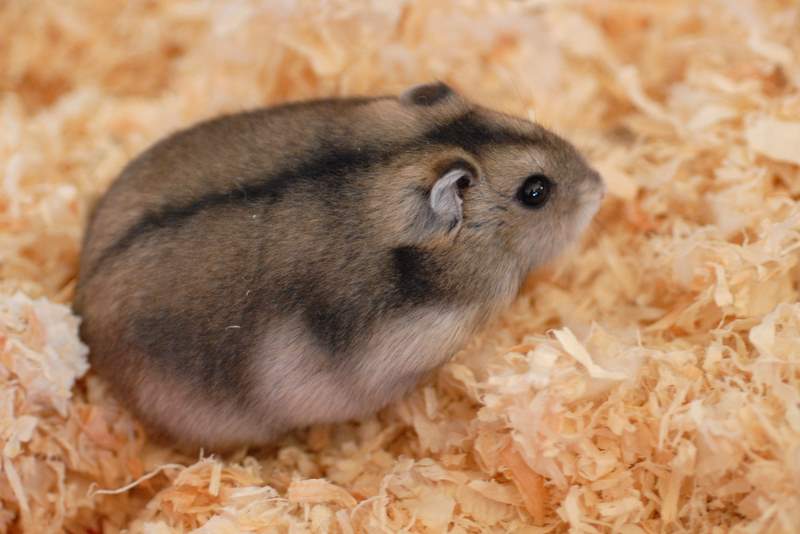Best Hamster for Low Interaction Needs
When choosing a hamster companion, it’s essential to consider the pet’s interaction needs. Not all hamsters require or desire regular handling. For those seeking a pet that can thrive with minimal handling, this article will explore the **best hamsters for low interaction needs**. We’ll discuss various hamster species, their temperaments, and how much interaction they typically require, all aiming to assist you in making an informed decision.
Understanding Hamster Species
Different hamster species exhibit varied temperaments and social needs. Typically, the dwarf hamsters, like Campbell’s and Roborovski, tend to have lower interaction requirements compared to larger species like the Syrian hamster. Understanding these differences is crucial for selecting the right companion that aligns with your lifestyle.
Campbell’s Dwarf Hamster
Campbell’s dwarf hamsters are small, social creatures that display a mix of independence and sociability. They generally prefer their space but can be friendly with regular handling, provided it’s done gently and infrequently. For someone desiring a pet with low interaction needs, a Campbell’s dwarf hamster can make an excellent choice. They thrive on being active during the night and can amuse themselves in their cage with toys and tunnels, reducing the need for daily human interaction.
/4717897342_c9b936c3d4_o-56a2bcef3df78cf77279615d.jpg)
Roborovski Dwarf Hamster
The Roborovski dwarf hamster is another fantastic option for those looking for a low-maintenance pet. These little creatures are particularly skittish and often prefer to keep their distance from humans, making them ideal for owners who value minimal interaction. Their small size and playful nature mean they can homestead in a larger cage full of toys and activities, where they can entertain themselves far more than many other hamsters. Observing their playful behavior can be rewarding, even if they don’t prefer being held.
Syrian Hamster: More Interaction, Less Stress
Though Syrian hamsters generally require more interaction due to their need for socialization, they can still be an option for low interaction needs if you follow some guidelines. Syrian hamsters are solitary by nature; once accustomed to their environment, they often enjoy observing their human companions from a distance rather than direct handling.
Handling a Syrian Hamster
If you choose a Syrian hamster while preferring low interaction, it’s important to habituate them gradually. Start by placing your hand near their enclosure without expecting them to come out. Over time, they may grow more comfortable with your presence, allowing for some occasional gentle handling. This can satisfy the bond without necessitating frequent and stressful interaction.
The Environmental Enrichment Factor
No matter the species, multiple environmental enrichment opportunities are crucial. Low interaction-hamsters will benefit from varied activities within their habitat, from chew toys to tunnels to hiding spots. This planned enrichment offers stimulation and mental exercise, contributing to their overall health and happiness while minimizing dependence on human companionship.
Choosing the Right Setup for Low Interaction
The setup you provide can greatly affect your hamster’s well-being and ease of care. Since you may not handle your hamster in-depth, ensure that their living environment encourages natural behaviors.
Optimal Cage Design
A spacious, well-structured cage is vital for your hamster’s comfort. For low interaction hamsters, choose a cage with multiple levels and ample space for climbing and burrowing. Adding nesting materials, toys, and running wheels can ensure they remain entertained even when you’re not handling them frequently. As visual creatures, providing enrichment they can observe from a distance leads to a more rewarding experience.
Lifestyle Considerations
When considering a hamster requiring low interaction, evaluate your daily routine. Type and level of interaction required can steer your choice. If your daily schedule accommodates infrequent playtime, opting for a more independent species like Roborovski or Campbell’s might be ideal. Conversely, if you have small windows of time amidst a busy schedule, a Syrian hamster may adapt well with gradual acclimatization to occasional handling.
Key Takeaways
- Choose species like Roborovski or Campbell’s dwarf hamsters for the least interaction needs.
- Syrian hamsters can also be suitable if given gradual handling.
- Enrichment and environmental setup are crucial for low interaction conditions.
- Evaluate your lifestyle and the hamster’s living space before making your choice.
FAQ
1. Which hamster species are best for very low interaction needs?
For very low interaction needs, Roborovski and Campbell’s dwarf hamsters are ideal. Both species are independent and do well entertaining themselves in a cage environment filled with toys and hiding spots.
2. Can I bond with a Syrian hamster if I prefer low interaction?
Yes, you can bond with a Syrian hamster even if aiming for low interaction. Introducing your presence slowly through their safe space can allow for gradual acclimatization to occasional handling, ensuring a positive experience for both of you.
3. What is the best cage setup for low interaction hamsters?
The best cage setup involves multi-level cages with ample climbing structures, chew toys, tunnels, and nesting materials. Such environments encourage natural exploration and play, allowing hamsters to share a rewarding experience without frequent handling.
4. How can I enrich the life of a low interaction hamster?
Enrich your hamster’s life through various toys, running wheels, and hiding spaces. Regularly rotate and introduce new toys to keep their environment stimulating without encouraging them to rely heavily on human interaction.
5. Do hamsters recognize their owners?
Yes, hamsters can recognize their owners through scent and sound. Although they may not provide interaction as dogs or cats do, many hamsters develop a level of comfort and familiarity with their caregivers over time.
6. Is it necessary to handle hamsters regularly?
No, it is not necessary to handle hamsters regularly, especially species that thrive on minimal interaction. However, gentle handling can help with socialization if done appropriately and at the hamster’s pace.
